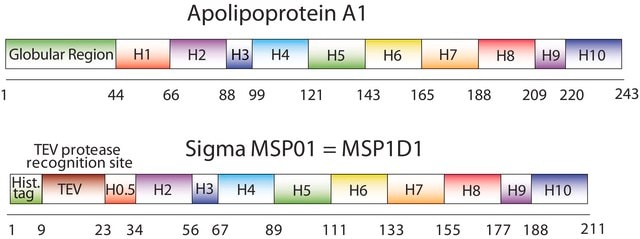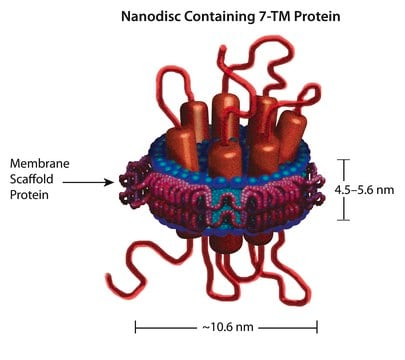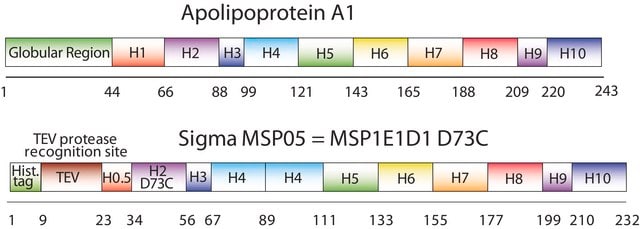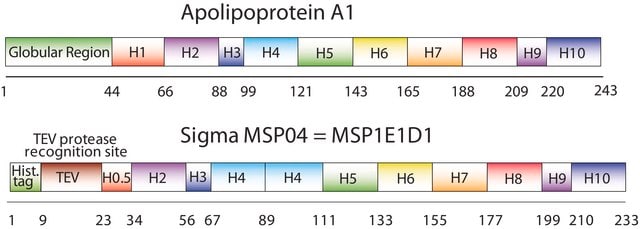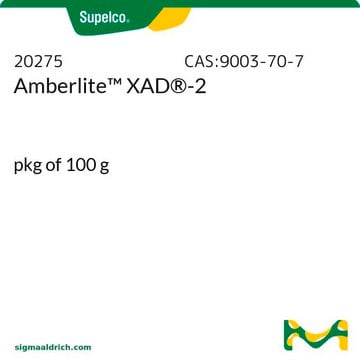MSP03
Membrane Scaffold Protein 1D1(-)
recombinant, expressed in E. coli, buffered aqueous solution
Synonyme(s) :
Membrane Scaffold Protein
About This Item
Produits recommandés
Produit recombinant
expressed in E. coli
Pureté
≥90% (SDS-GE)
Forme
buffered aqueous solution
Poids mol.
22,043.9 Da
Solubilité
water: soluble
Conditions d'expédition
ambient
Température de stockage
−20°C
Description générale
Application
Actions biochimiques/physiologiques
Informations légales
- 7,691,414 Membrane scaffold proteins
- 7,662,410 Membrane scaffold proteins and embedded membrane proteins
- 7,622,437 Tissue factor compositions and methods
- 7,592,008 Membrane scaffold proteins
- 7,575,763 Membrane scaffold proteins and tethered membrane proteins
- 7,083,958 Membrane scaffold proteins
- 7,048,949 Membrane scaffold proteins
Code de la classe de stockage
12 - Non Combustible Liquids
Classe de danger pour l'eau (WGK)
WGK 2
Point d'éclair (°F)
Not applicable
Point d'éclair (°C)
Not applicable
Certificats d'analyse (COA)
Recherchez un Certificats d'analyse (COA) en saisissant le numéro de lot du produit. Les numéros de lot figurent sur l'étiquette du produit après les mots "Lot" ou "Batch".
Déjà en possession de ce produit ?
Retrouvez la documentation relative aux produits que vous avez récemment achetés dans la Bibliothèque de documents.
Les clients ont également consulté
Protocoles
Nanodisc technology aids membrane protein solubilization, overcoming associated challenges in diverse protein classes.
Notre équipe de scientifiques dispose d'une expérience dans tous les secteurs de la recherche, notamment en sciences de la vie, science des matériaux, synthèse chimique, chromatographie, analyse et dans de nombreux autres domaines..
Contacter notre Service technique

